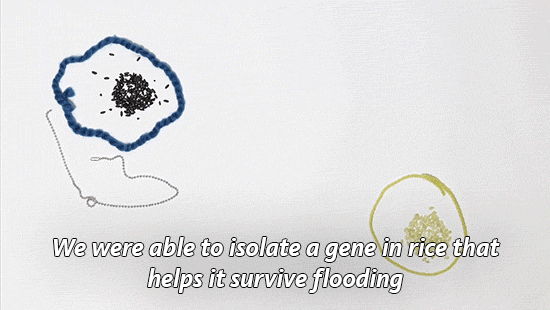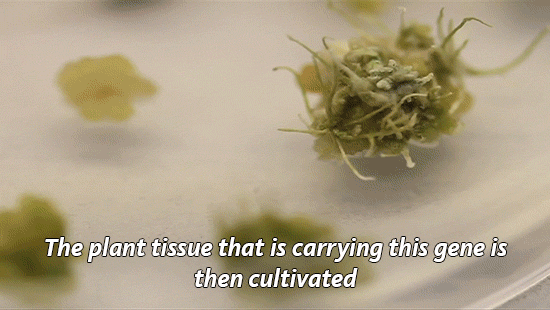Neuroscientist Discovers Potential New Source For Pain Inhibition
Neuroscientist Discovers Potential New Source for Pain Inhibition
A UT Dallas scientist has found a new neurological mechanism that appears to contribute to a reduction in pain.
According to Dr. Ted Price, associate professor in the School of Behavioral and Brain Sciences, the discovery of neuroligin-2 as a cause exacerbating chronic pain is significant for the research community. Although the findings likely won’t immediately lead to new pain therapies, the findings offer a potential new therapeutic direction to investigate, he said.
Price’s research on the topic has recently been published online in Pain, the journal of the International Association for the Study of Pain.
The study focused on the body’s inhibitory networks — a series of biochemical reactions that decrease certain neurological activity, such as pain. Price said a great deal of previous research in this area has focused on the activity of the neurotransmitter GABA, a chemical released by nerve cells in the brain.
Normally, a GABA neurotransmitter acts to inhibit neuronal activity, such as pain. However, when pain becomes chronic there is strong evidence that a process called GABAergic plasticity can cause GABA to lose its inhibitory activity, sometimes making the pain even worse.
The source of these excitatory actions in neuronal circuits has been broadly attributed to chloride ions, but Price’s research has found another potential cause of GABAergic plasticity: synaptic adhesion molecules called neuroligin-2.
“From a basic science perspective, we’re really excited about it because it demonstrates that the types of GABAergic plasticity that can occur in the setting of chronic pain are more diverse than we’ve appreciated before,” he said.
Price, who heads the undergraduate research program in neuroscience in the school, focuses much of his research on understanding the neuroscience behind pain, particularly chronic pain. He said individuals with chronic pain typically don’t receive the pain-reduction benefits delivered by inhibitory systems. Instead, they often experience increased pain.
“When you hit your hand with a hammer, almost everybody has the same reflex reaction — that is, to rub your finger which, in turn, helps to reduce pain. The reason that works is because it increases GABAergic inhibition in the spinal cord,” Price said. “However, people who have chronic pain — if they do the same thing — find that rubbing it actually makes the pain worse. That’s because the GABAergic system loses its efficacy and, in fact, can become excitatory.”
Price said the research is another step in determining why the GABAergic system stops working correctly in some people and provides a second theory for what drives the system.
“Having two ideas and different models will allow us to determine what the therapeutic opportunities are — creating something that will change that back to normal. The lack of performance in the inhibitory system is very detrimental to those who are in chronic pain,” he said.
Price said the development of chronic pain is, in essence, one’s body “learning” something that is bad.
“It’s changing the way the body functions — it’s learning. That learning, in the case of chronic pain, is aberrant — it’s causing the situation to get worse. If we can figure out what that form of learning was, then we can potentially reverse it. Understanding that the GABAergic system changes during this form of learning potentially offers a new therapeutic avenue,” he said.
More Posts from Science-is-magical and Others

Possible case for fifth force of nature
A team of physicists at the University of California has uploaded a paper to the arXiv preprint server in which they suggest that work done by a team in Hungary last year might have revealed the existence of a fifth force of nature. Their paper has, quite naturally, caused quite a stir in the physics community as several groups have set a goal of reproducing the experiments conducted by the team at the Hungarian Academy of Science’s Institute for Nuclear Research.
The work done by the Hungarian team, led by Attila Krasznahorkay, examined the possible existence of dark photons - the analog of conventional photons but that work with dark matter. They shot protons at lithium-7 samples creating beryllium-8 nuclei, which, as it decayed, emitted pairs of electrons and positrons. Surprisingly, as they monitored the emitted pairs, instead of a consistent drop-off, there was a slight bump, which the researchers attributed to the creation of an unknown particle with a mass of approximately 17 MeV. The team uploaded their results to the arXiv server, and their paper was later published by Physical Review Letters. It attracted very little attention until the team at UoC uploaded their own paper suggesting that the new particle found by the Hungarian team was not a dark photon, but was instead possibly a protophobic X boson, which they further suggested might carry a super-short force which acts over just the width of an atomic nucleus - which would mean that it is a force that is not one of the four described as the fundamental forces that underlie modern physics.
The paper uploaded by the UoC team has created some excitement, as well as public exclamations of doubt - reports of the possibility of a fifth force of nature have been heard before, but none have panned out. But still, the idea is intriguing enough that several teams have announced plans to repeat the experiments conducted by the Hungarian team, and all eyes will be on the DarkLight experiments at the Jefferson Laboratory, where a team is also looking for evidence of dark photons - they will be shooting electrons at gas targets looking for anything with masses between 10 and 100 MeV, and now more specifically for those in the 17 MeV region. What they find, or don’t, could prove whether an elusive fifth force of nature actually exists, within a year’s time. [Image][Continue Reading→]




Why we need GMOs to survive climate change
Genetically modified organisms get a bad rap for many reasons, but we’ve actually been genetically altering what we eat since the dawn of human history.
“For 10,000 years, we have altered the genetic makeup of our crops,”explains UC Davis plant pathology professor Pamela Ronald.
“Today virtually everything we eat is produced from seeds that we have genetically altered in one way or another.” (You can read more about Ronald’s thoughts on genetically engineered food here.)
Right now her focus is on rice. It’s one of our basic crops and without it, we would struggle to feed much of the world.
With climate change, we’re seeing an increase in flooding in places like India and Bangladesh, which makes it harder to grow this important food staple.
So Ronald and her lab have developed a flood-tolerant strain of rice. It’s known as Sub1a or “scuba rice” and millions of farmers in South Asia are now growing it in their fields.

Today is National Food Day, a day dedicated to hunger awareness. But as we focus on food insecurity, we need to talk more about how global warming will make the problem worse.
As our climate continues to heat up, it has huge impacts on what foods we are able to grow. Will our crops be able to survive droughts and floods? The University of California leads six labs that are working to develop other climate-resilient crops including chickpea, cowpea and millet.
Find out what other scientists are doing to improve our food.

Oh hey, not a big deal, but the hubble took a picture of a star that’s nearing supernova status
Here are 17 jaw-dropping photos of space that show us just how small we really are:
This photo of the moon and Earth taken from the International Space Station.

A dwarf galaxy, about 11 million light-years away from us.

Earth as seen from the moon in 1968.

A cluster of stars, 20,000 light-years away from Earth.

The first flower grown in the International Space Station, photographed by astronaut Scott Kelly.

Saturn, seen through an infared filter.

These visible “loops” on the surface of the sun can reach up to 15 times the diameter of Earth in height.

The Northen Lights just North of Chicago, viewed from the International Space Station.

The Quintuplet Cluster, located 100 light-years from the center of our galaxy.

Pluto and one of its moons, Charon.

The Great Pyramids of Giza, seen from space.

Astronaut Bruce McCandless maneuvering, untethered, above Earth in 1984.

Galaxy NGC 6240, 400 million light-years away from Earth.

Palomar 12, a cluster of stars on the outskirts of the Milky Way.

The remnants of an exploded star.

New York City, seen from the International Space Station.

And the remains of a supernova whose explosion may have been seen almost 2,000 years ago by Chinese astronomers.
Follow @the-future-now






Happy TRAPPIST-1 Day!
Here’s a comic on our latest discovery!
http://www.space.com/35806-trappist-1-facts.html
Listening To Music Releases Dopamine In The Brain
Have you ever been listening to a piece of music and experienced intense pleasure, even chills? Valorie Salimpoor and team (2010) conducted research that shows that listening to music can release the neurotransmitter dopamine.
A wide range of music — The researchers used PET (positron emission tomography) scans, fMRI, and psychophysiological measures such as heart rate to measure reactions while people listened to music. The participants provided music that they said gave them intense pleasure and chills. The range of music varied, from classical, folk, jazz, elecronica, rock pop, tango, and more.
Keep reading
-
 riboher71-84 liked this · 6 years ago
riboher71-84 liked this · 6 years ago -
 dragonkinglover reblogged this · 6 years ago
dragonkinglover reblogged this · 6 years ago -
 dragonkinglover liked this · 6 years ago
dragonkinglover liked this · 6 years ago -
 science-is-magical reblogged this · 8 years ago
science-is-magical reblogged this · 8 years ago -
 aaronmarcuscoughlin liked this · 9 years ago
aaronmarcuscoughlin liked this · 9 years ago -
 mimimyers1214-blog reblogged this · 9 years ago
mimimyers1214-blog reblogged this · 9 years ago -
 mimimyers1214-blog liked this · 9 years ago
mimimyers1214-blog liked this · 9 years ago -
 scientificchic reblogged this · 9 years ago
scientificchic reblogged this · 9 years ago -
 boggs88-blog liked this · 9 years ago
boggs88-blog liked this · 9 years ago -
 therodt reblogged this · 9 years ago
therodt reblogged this · 9 years ago -
 wild-buttercup liked this · 9 years ago
wild-buttercup liked this · 9 years ago -
 thetardisandbaby reblogged this · 9 years ago
thetardisandbaby reblogged this · 9 years ago -
 darkmaster07 reblogged this · 9 years ago
darkmaster07 reblogged this · 9 years ago -
 darkmaster07 liked this · 9 years ago
darkmaster07 liked this · 9 years ago -
 mangosyfresas liked this · 9 years ago
mangosyfresas liked this · 9 years ago -
 coolhamdi reblogged this · 9 years ago
coolhamdi reblogged this · 9 years ago -
 kimpoy0109-blog reblogged this · 9 years ago
kimpoy0109-blog reblogged this · 9 years ago -
 mmatertum-blog liked this · 9 years ago
mmatertum-blog liked this · 9 years ago -
 lazilyherphilosopher liked this · 9 years ago
lazilyherphilosopher liked this · 9 years ago -
 e-starstuff liked this · 9 years ago
e-starstuff liked this · 9 years ago -
 humongousalpacawizard-blog liked this · 9 years ago
humongousalpacawizard-blog liked this · 9 years ago -
 emptymusings liked this · 9 years ago
emptymusings liked this · 9 years ago -
 thejewishjedi liked this · 9 years ago
thejewishjedi liked this · 9 years ago -
 samoanrockyjoe86 reblogged this · 9 years ago
samoanrockyjoe86 reblogged this · 9 years ago -
 peachesxxxcreamz liked this · 9 years ago
peachesxxxcreamz liked this · 9 years ago -
 brittaniahart reblogged this · 9 years ago
brittaniahart reblogged this · 9 years ago -
 brittaniahart liked this · 9 years ago
brittaniahart liked this · 9 years ago -
 opakakaek reblogged this · 9 years ago
opakakaek reblogged this · 9 years ago -
 eightshinyunicorns liked this · 9 years ago
eightshinyunicorns liked this · 9 years ago -
 lizzy-monstera liked this · 9 years ago
lizzy-monstera liked this · 9 years ago -
 mumusbay liked this · 9 years ago
mumusbay liked this · 9 years ago -
 secretacent liked this · 9 years ago
secretacent liked this · 9 years ago -
 rabaukentochter liked this · 9 years ago
rabaukentochter liked this · 9 years ago -
 nurnielfa liked this · 9 years ago
nurnielfa liked this · 9 years ago -
 iridium2013 liked this · 9 years ago
iridium2013 liked this · 9 years ago -
 curvingwherewhen liked this · 9 years ago
curvingwherewhen liked this · 9 years ago -
 paramecie liked this · 9 years ago
paramecie liked this · 9 years ago -
 castorenaa liked this · 9 years ago
castorenaa liked this · 9 years ago -
 aspoonfullofsugar33 liked this · 9 years ago
aspoonfullofsugar33 liked this · 9 years ago -
 keepmusicflowing liked this · 9 years ago
keepmusicflowing liked this · 9 years ago -
 leftgladiatorcollective reblogged this · 9 years ago
leftgladiatorcollective reblogged this · 9 years ago -
 alwayzefree reblogged this · 9 years ago
alwayzefree reblogged this · 9 years ago -
 alwayzefree liked this · 9 years ago
alwayzefree liked this · 9 years ago



